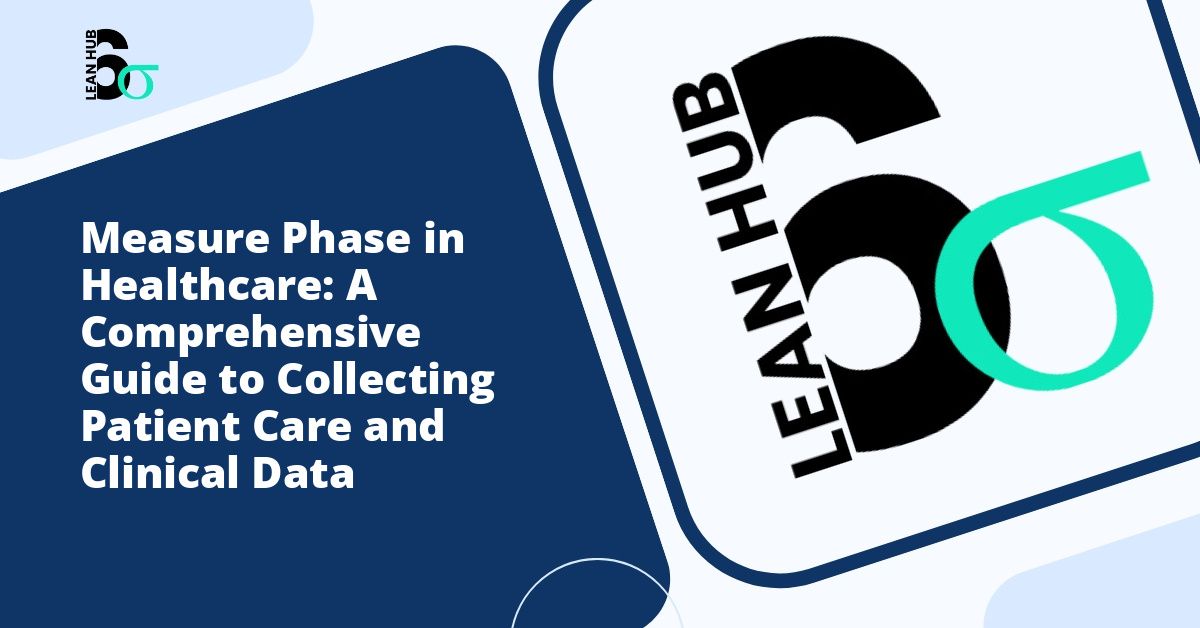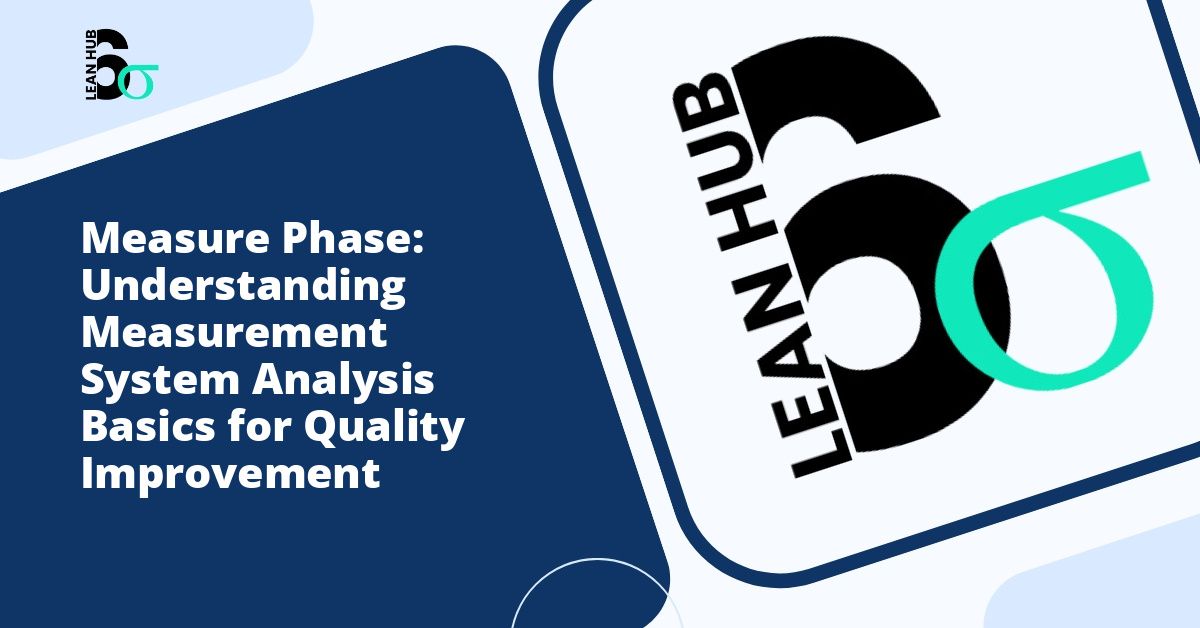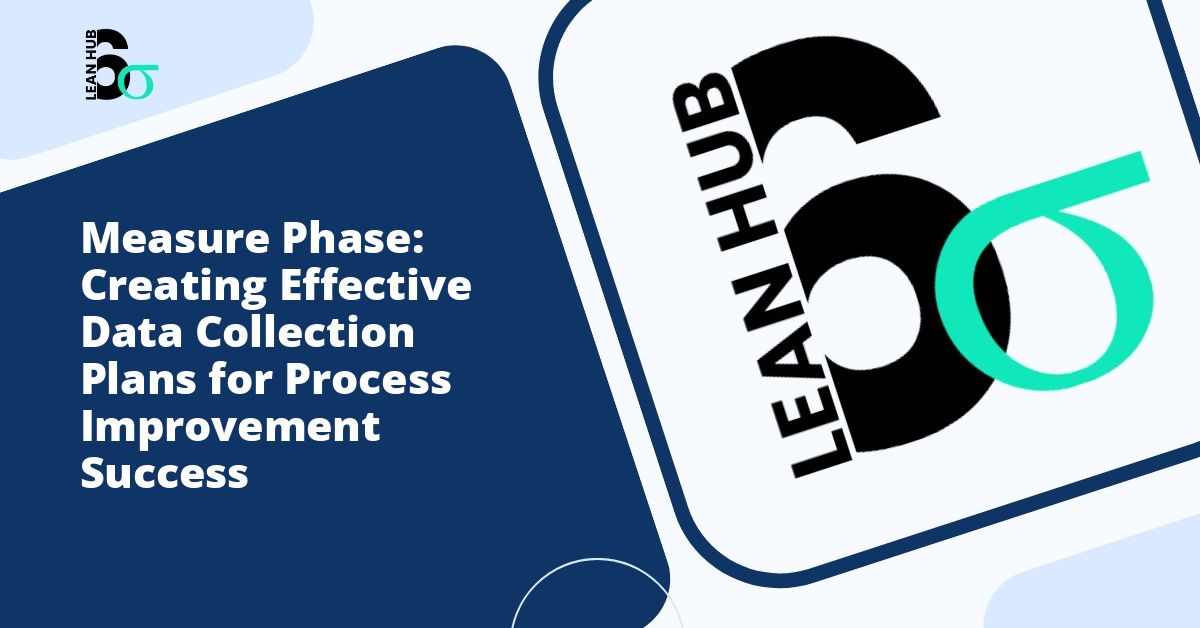In the complex landscape of healthcare quality improvement, collecting accurate and meaningful data stands as a cornerstone of effective patient care enhancement. The Measure phase, a critical component of the Lean Six Sigma methodology, provides healthcare organizations with the framework necessary to gather, validate, and analyze clinical data that drives informed decision-making and sustainable improvements.
Understanding the Measure Phase in Healthcare Context
The Measure phase represents the second stage in the DMAIC (Define, Measure, Analyze, Improve, Control) cycle of Lean Six Sigma. Following the Define phase, where project goals and patient care issues are identified, the Measure phase focuses on establishing baseline performance metrics and collecting relevant clinical data. This systematic approach enables healthcare professionals to move beyond assumptions and anecdotal evidence, relying instead on quantifiable information that reflects the current state of patient care delivery. You might also enjoy reading about Control Charts Basics: Understanding Variation in the Measure Phase of Lean Six Sigma.
Healthcare organizations implementing Lean Six Sigma principles understand that what gets measured gets improved. The Measure phase transforms abstract quality concerns into concrete data points that can be tracked, analyzed, and ultimately enhanced to benefit patient outcomes. You might also enjoy reading about How to Conduct a Gage R&R Study: Complete Step-by-Step Guide for Quality Improvement.
The Connection Between Recognize Phase and Data Collection
Before diving into the Measure phase, healthcare teams often engage in what can be termed the recognize phase, an informal yet crucial preliminary step. During the recognize phase, stakeholders identify problems, inefficiencies, and opportunities for improvement within clinical workflows and patient care processes. This recognition serves as the foundation upon which measurement strategies are built. You might also enjoy reading about Takt Time vs. Cycle Time vs. Lead Time: Understanding Critical Time Metrics in Manufacturing.
The recognize phase involves frontline staff, physicians, nurses, and administrators sharing their observations about gaps in care delivery, patient safety concerns, or operational bottlenecks. These initial recognitions inform which specific metrics should be tracked during the formal Measure phase, ensuring that data collection efforts align with real-world challenges facing the healthcare organization.
Key Objectives of the Measure Phase in Healthcare
The Measure phase in healthcare settings pursues several essential objectives that collectively contribute to improved patient care quality:
- Establish baseline performance: Determine current levels of performance for identified processes or outcomes before implementing any changes.
- Validate measurement systems: Ensure that data collection methods are reliable, accurate, and consistent across different times and observers.
- Identify variation sources: Distinguish between common cause variation inherent in processes and special cause variation that requires specific intervention.
- Quantify problem magnitude: Move from general concerns to specific, measurable impacts on patient care and organizational performance.
- Create data-driven culture: Foster an environment where clinical decisions are supported by empirical evidence rather than intuition alone.
Types of Patient Care Data Collected
Healthcare organizations collect diverse data types during the Measure phase, each offering unique insights into clinical performance and patient outcomes:
Clinical Outcome Data
This category includes metrics directly related to patient health status and treatment effectiveness. Examples include mortality rates, complication rates, infection rates, readmission rates, and disease-specific outcome measures. Clinical outcome data provides the most direct indication of whether care delivery meets quality standards and achieves desired patient health improvements.
Process Metrics
Process data tracks how care is delivered rather than focusing solely on outcomes. These metrics might include medication administration timing, hand hygiene compliance rates, documentation completion rates, or adherence to clinical protocols. Process metrics help identify specific workflow elements that may require optimization to improve overall care quality.
Patient Experience Data
Patient satisfaction scores, complaint frequencies, and patient-reported outcome measures fall into this category. This subjective yet invaluable data captures the patient perspective on care delivery, revealing aspects of the healthcare experience that clinical metrics alone cannot illuminate.
Resource Utilization Data
Understanding how resources are consumed during care delivery helps organizations identify inefficiencies and cost reduction opportunities. This includes length of stay data, supply usage, staffing ratios, equipment utilization rates, and diagnostic test ordering patterns.
Data Collection Methods in Healthcare Settings
Selecting appropriate data collection methods ensures the information gathered accurately represents the processes under examination. Healthcare organizations typically employ multiple approaches:
Electronic Health Record Mining
Modern electronic health records (EHRs) serve as rich data repositories. Automated queries can extract structured data elements such as vital signs, laboratory values, medication orders, and documentation timestamps. This method offers efficiency and reduces manual data collection burden, though it requires careful attention to data quality and completeness.
Direct Observation
Trained observers document processes in real-time, capturing details that automated systems may miss. Direct observation proves particularly valuable for understanding workflow sequences, identifying non-value-added steps, and recognizing environmental factors affecting care delivery. This method requires significant time investment but yields rich contextual information.
Surveys and Questionnaires
Structured instruments gather information from patients, families, and staff members. These tools collect subjective experiences, perceptions, and satisfaction levels that complement objective clinical data. Careful survey design ensures questions elicit meaningful responses while minimizing bias.
Administrative and Billing Data
Claims data, diagnosis codes, and procedure codes offer insights into care patterns, resource consumption, and patient populations. While administrative data may lack the clinical granularity of medical records, it provides valuable information about care across different settings and timeframes.
Ensuring Data Quality and Reliability
The value of the Measure phase depends entirely on data quality. Healthcare teams must implement rigorous approaches to ensure the information collected accurately represents reality:
Measurement System Analysis evaluates whether data collection tools and processes produce consistent, reproducible results. This includes assessing inter-rater reliability when multiple individuals collect data and examining whether measurements remain stable over time.
Operational Definitions create clear, unambiguous descriptions of what is being measured and how. When different team members interpret metrics differently, data becomes unreliable. Precise operational definitions eliminate confusion and ensure consistency.
Data Validation Procedures verify that collected information is accurate and complete. Random audits, cross-checking against source documents, and automated validation rules help identify and correct data errors before analysis begins.
Common Challenges and Solutions
Healthcare organizations frequently encounter obstacles during the Measure phase that can compromise data collection efforts:
Insufficient resources for data collection often limit scope and frequency of measurement. Solutions include leveraging existing data sources, automating collection where possible, and prioritizing the most critical metrics rather than attempting to measure everything.
Staff resistance to additional documentation burden can undermine data quality. Addressing this requires clear communication about improvement goals, demonstrating how data will drive meaningful changes, and minimizing disruption to clinical workflows.
Data silos across departments prevent comprehensive understanding of patient care processes. Breaking down these barriers through integrated data systems and cross-functional collaboration ensures a holistic view of performance.
Moving Forward with Measured Data
Successful completion of the Measure phase positions healthcare organizations to advance into the Analyze phase of Lean Six Sigma, where collected data reveals root causes of performance gaps and opportunities for targeted interventions. The investment in rigorous data collection during the Measure phase pays dividends throughout the improvement journey, providing the empirical foundation for evidence-based changes that enhance patient care quality, safety, and organizational efficiency.
By embracing systematic measurement practices and recognizing the intrinsic connection between data quality and improvement success, healthcare organizations transform their approach to quality enhancement from reactive problem-solving to proactive, data-driven excellence.








